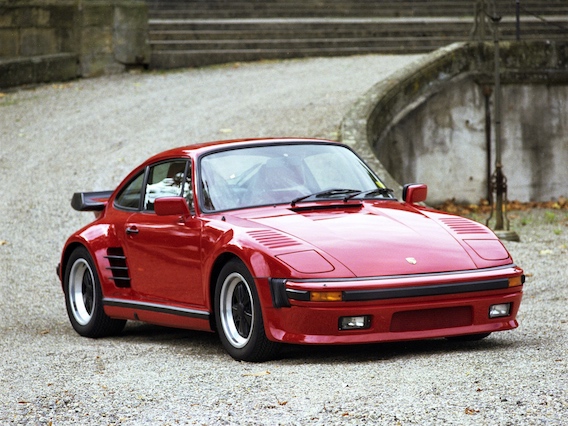Bodywork Authenticity
Bodywork Checks
Fitment of steel front wings/fenders (not fibreglass). First generation cars had no pop-up lamps. Second generation pre-M505/M506 cars could be specified with or without the front or rear wing vents, with or without sill covers, and third generation (M505/M506) cars had the front and rear wing vents and sill covers. Note that the lamp pod covers themselves have a tapered profile. Some aftermarket conversions are more rectangular e.g. Gemballa.

A number of factory modifications were made comprising:
The front left wheel house wall is modified to permit the submergence of the concealed lamp pods. The bumper impact absorber/pipe holder is now welded onto the wheel house wall.
The headlamp operating shaft has consoles or metal retaining mounts welded on the left and right sides of the lock cross panel to take the lamp bar, with M8 securing nuts that mount the bar welded to the bonnet lock console in the middle. This shaft is powered by a single central drive motor in front of the lock console (twin motors are a sure sign of aftermarket conversion).
There should be a 7mm gap between the wings and the front and sides of each lamp pod cover and a 9 mm gap to the top. Cars with pop-up lamps should have Porsche 944 circular style sealed units and not square or rectangular lamp units (typically fitted by aftermarket tuners).
Inside the front luggage compartment/trunk area there should be three fibreglass covers. One around the lamp motor to the front cross panel, another covering the left lamp linkage, and a third covering the right lamp linkage and oil cooler pipes (non M505 cars). In additon, there are two brackets welded to the luggage compartment floor plate to the right rear side to mount the re-sited car jack via securing straps.
Boxed sill covers / rocker panel covers and lamp pod covers should be stamped with unique factory part numbers (later M505/M506 models). Jacking tube extensions are welded on to existing jacking tubes to compensate for boxed sill covers / rocker panel covers. The rubber plugs on cars with sill covers / rocker panel covers are different from standard 911 to account for the change in inclination of the jacking tube (due to boxed sill covers).
Cars fitted with rear air inlet ducts (some first generation models, most (but not all) second generation models and all third generation models), should have a 10mm collar around the edges of the air duct on the rear wings/fenders. The inner duct area on pre-M505/M506 cars (Special Wishes) is made from fibreglass bonded to the wings without a noticeable join. Late Special Wishes cars and all M505/M506 cars used hot-galvanised sheet metal secured to a bracket welded to the wheel house wall, and mounted with self-tapping screws to the wing (with a noticeable join/shut line). M505 cars had ducts that allowed for the oil cooler on the right side.
The vent slats on the rear wings (spacing connectors) are each of different size to fit the profile of the duct. Earlier cars had slats made from wood with later models having ones made from a fibreglass core. The connectors should have been mounted with 58 mm of spacing between each one.
US cars pre-dating the M505 models should be Euro imports due to the car not being type approved prior to 1987. If it is a genuine Euro import, it will most likely have the turn signal repeaters behind the front arches on the wings. Those not featuring these additional lamps are most likely to be after market conversions.
Given the values of these cars, there are also a handful in circulation that have been converted from LHD to RHD, and therefore not as manufactured at the factory. Obvious tell-tale signs include the direction of the wipers, the position of the door mirrors and the presence or absence of market-specific lamps and side lamps. Due to type approval laws, it would have been unlikely that such vehicles would have been delivered new in this form.
More details can be found on:
If you have found what seems to be a genuine car, next you also need to consider a buyer's checklist, find out more








